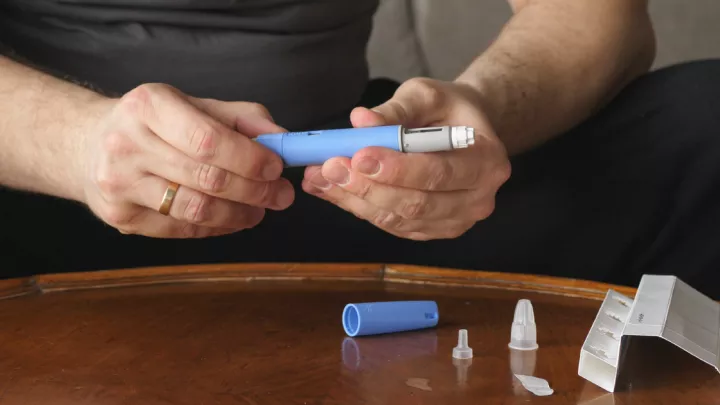Natural methods of inducing labor

Natural methods of labor induction include food, drinks or activities that are believed to start labor. Many methods date back as far as Ancient Egypt. Unfortunately, most have little scientific evidence to support them. You should always discuss natural induction methods with your doctor or midwife to ensure they’re safe for you and your baby.
“Around 40 weeks of pregnancy, many women experience more fatigue, pelvic pressure and discomfort,” says Nebraska Medicine certified nurse-midwife Alyssa Fischer, CNM. “This is when patients ask what they can do to get labor started.”
Which natural induction methods can I try at home?
In the following list, Fischer covers some of the methods her patients frequently ask about. Always discuss any methods you’d like to try with your health care provider.
- Dates: These nutritious fruits are an excellent source of carbohydrates, B vitamins, calcium, magnesium and potassium. While research is limited, it’s thought that dates may help the uterine muscle respond better to oxytocin, resulting in more effective contractions.
“Most studies recommend eating 70 to 100 grams of date fruits daily, starting at 37 weeks of pregnancy,” says Fischer. “This is equal to about three to four large Medjool dates with pits or six to 10 smaller, pitted dates.”
If you have pre-diabetes, diabetes or gestational diabetes, you shouldn’t eat dates due to their high sugar content.
- Pineapple: Unfortunately, there’s no research-based evidence showing that pineapple will help start labor. However, eating pineapple during pregnancy isn’t known to be harmful. If you normally eat pineapple and don't have an allergy to it, it’s generally safe to try.
- Raspberry leaf tea: Historically, red raspberry leaf tea has been used to treat problems related to menstruation, childbirth and digestion. It’s thought to help strengthen and tone the uterus for labor and prevent postpartum hemorrhage.
According to Fischer, there's very little research on human consumption of red raspberry leaf tea during pregnancy. “Until there's more safety data, I don’t necessarily recommend it for labor induction,” she says. “However, a little raspberry leaf tea isn’t likely to harm you.”
- Evening primrose oil: EPO is a high source of omega-3 fatty acids. It contains gamma-linolenic acid, a precursor to prostaglandin. Prostaglandin helps ripen the cervix, making it ready for labor.
Most research supports using EPO vaginally rather than orally. Side effects may include nausea, headache and diarrhea. If you’re taking anticoagulant medications, you should not use EPO.
- Castor oil: Research has found that 54% to 58% of women will begin labor within 24 hours of taking castor oil. It seems to work by encouraging uterine contractions and stimulating the bowel.
Fischer doesn’t recommend castor oil to patients because it’s a powerful laxative. Nausea is a significant side effect found in several research studies. “I tell my patients that while castor oil may or may not start your labor, it will likely give you unwanted side effects,” says Fischer.
Studies don’t recommend using castor oil before 40 weeks. The recommended dose is two ounces one time only by mouth. Do not use castor oil if you’ve had a prior c-section.
- Sex: Research hasn’t found that sex will induce labor. However, there are three ways that sex may be beneficial: 1) Semen is a natural prostaglandin, the hormone that helps ripen the cervix; 2) Skin-to-skin contact, female orgasm and nipple stimulation can help increase oxytocin release; 3) Female orgasms can stimulate uterine activity.
“Overall, more research is needed on this method,” says Fischer. “Before you have unprotected sex, make sure your bag of water is intact and that your partner isn’t at risk of sexually transmitted infections.”
Other natural ways of starting labor in a health care setting
If you’re nearing the end of your pregnancy, your health care provider may help you begin labor more naturally using the following methods:
- Nipple stimulation: Nipple stimulation using a hand pump or mechanical breast pump should only be done while your baby is being monitored by a health care provider.
“When we perform nipple stimulation to induce labor, we follow a specific protocol,” explains Fischer. “Babies must be monitored because nipple stimulation is likely to cause uterine contractions. There’s a risk of overstimulating the uterus, so you should never try this method alone.”
- Membrane sweep: A membrane sweep can be done once you’ve reached 38 weeks of pregnancy and are two to three centimeters dilated. This method should only be performed by your health care provider.
While performing a vaginal exam, your provider sweeps their fingers to create separation between the uterine wall and the bag of water. This releases prostaglandins which help stimulate uterine contractions.
“Membrane sweeps can be done even if you’ve tested positive for Group B streptococcus,” says Fischer. “Studies have found no increase in infection among babies whose mothers are GBS positive.”
Call 800.922.0000 to schedule an appointment with one of our specialists.







